Solargraphy is a photographic technique that allows for extremely long exposures that trace the path of the sun in the sky over the course of months, or even a whole year.
A Solarcan is an off-the-shelf, very easy to use, entry into the technique that allows anyone to have a go at solargraphy with essentially zero photographic skills. I think it’s a brilliant thing for photography, but also a great educational product that will no doubt engage load of kids and adults alike.
This is a short post talking about my experiences creating my first Solargraph with a Solarcan… It’s short, because there’s so little to it!
A bit of background
I bought my first Solarcan through the successful Kickstarter campaign. Sam Cornwell launched the product on the platform in April 2017. I actually already knew of Sam through another one of his maker endeavours – I’d bought a couple of 3D printed 35mm to 120 film adapters off him and we’d got chatting via social media. By the time his Kickstarter was a success, I knew him well enough to feel somewhat sympathetic for him when I saw the pictures he posted on social media surrounded by the 2000 odd Solarcans he had to make to fulfil the huge amount of orders his campaign brought him.
Just over a year later and he’s been through his second successful Kickstarter to have retail packaging designed, has a growing community of Solarcan solargraphers on Facebook regularly posting their successes, and has even been featured on prime time TV on Channel 4. Suffice to say, it’s gone well for him – well deserved too!
The basics
Now Sam has developed proper retail packaging, Solarcan also comes with a handy instruction booklet. This contains all you need to know about how to use the Solarcan, and also why it works.
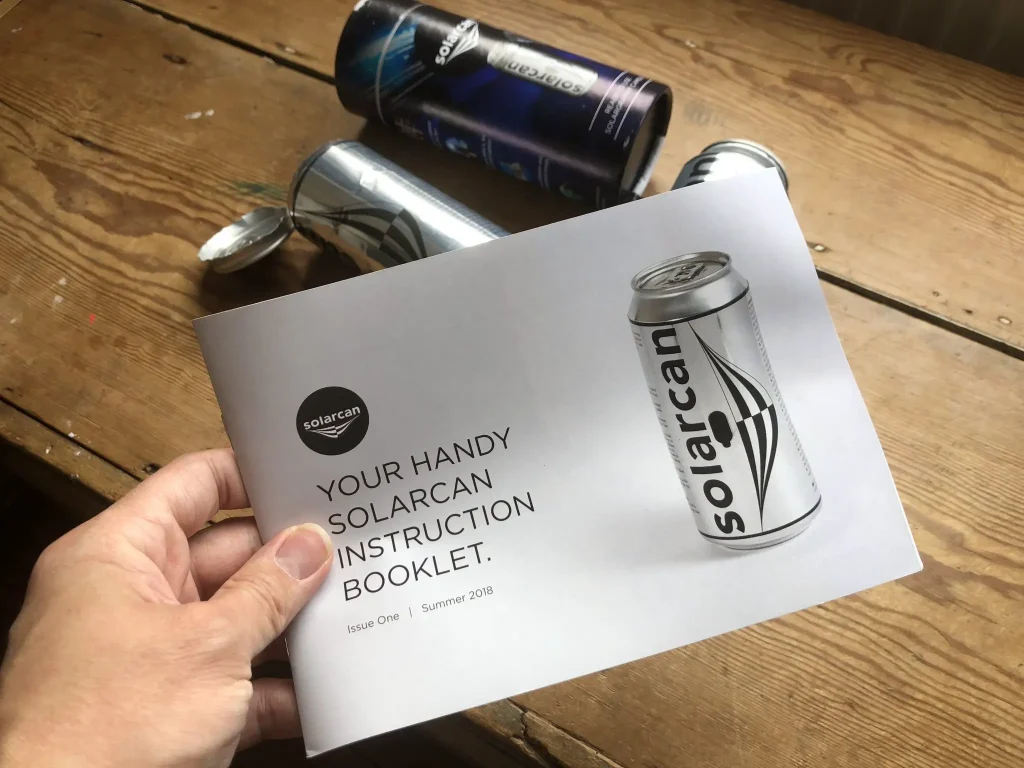
The short version is that Solarcan is a pinhole camera that contains a sheet of normal photographic paper – the sort you’d use in a darkroom. In a darkroom it needs to be exposed to light, and the latent image developed in chemicals. In the Solarcan the paper is subjected to the light from the sun which is so bright – even through a pinhole – that it darkens the paper. As the sun moves across the sky, it creates darkened lines on the paper that shows it’s path. Depending on the framing, some foreground detail and anything that blocks the light from the sun can also be seen.
My Solarcan Experience
My Solarcan sat on my desk at work for ages before I got around to doing anything with it. I wanted to put it up on my roof, but was simultaneously quite keen on not going the way of Rod Hull, so never really got around to it. This was until I started to see lots of results appear on the fb group. The best of them, or at least the ones I liked the most, all featured stuff that blocked the path of the sun – that is to say they had some compositional element or another to add interest to the frame.
This got me thinking that rather than climb up on the roof, I could mount the Solarcan on the back of my house. A few doors down one of my neighbours has a massive tree in their garden which would hopefully add a bit of compositional interest to the image.
Here’s where I mounted it…
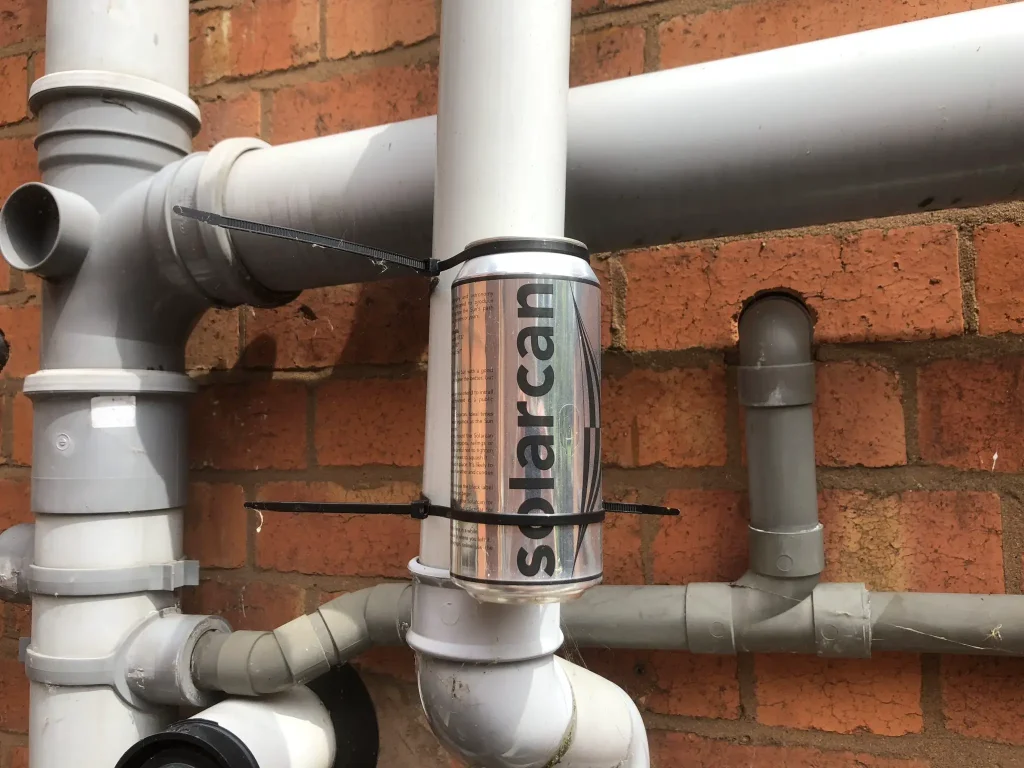
…and here’s the view the Solarcan had.
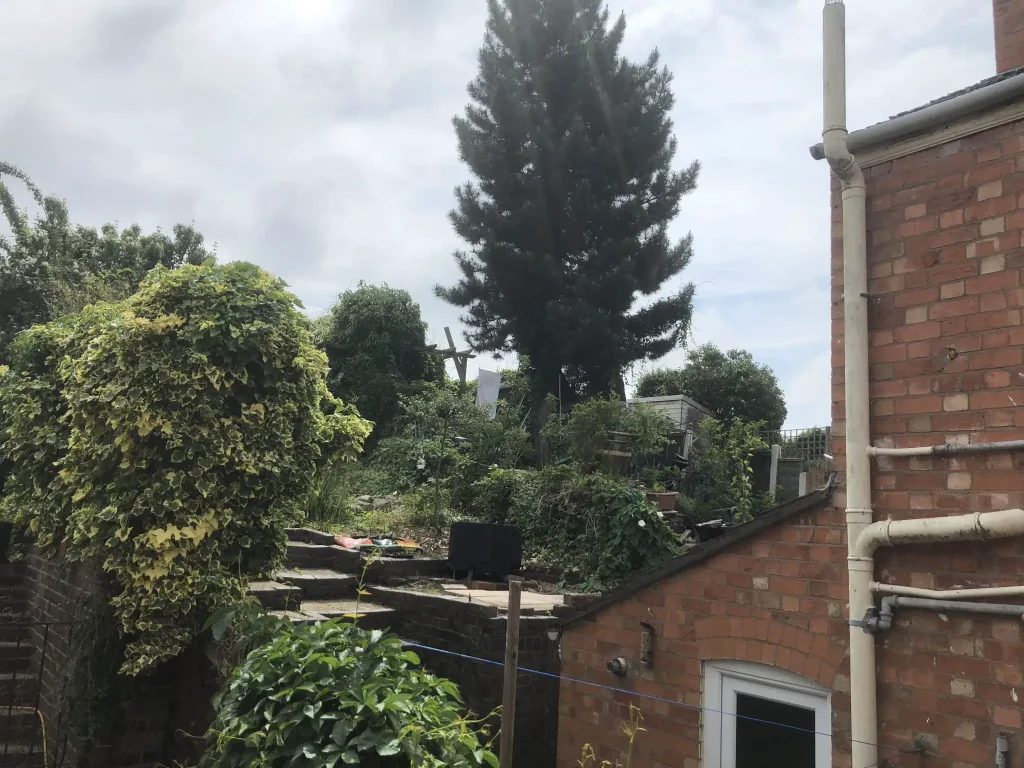
Actually, the angle of view the Solarcan has is much, much wider – the photographic paper is a 5×7 sheet that curves around the inside of the can. The idea is that it can show the entire path of the sun from it rising in the east to setting in the west. The view from the back of my house definitely doesn’t see all that, but with many other results I’d seen demonstrating the full path of the Sun I figured I’d just see what I’d get…
The result
This morning I got the ladder out and fetched my Solarcan down. This was the result I pulled from within it:
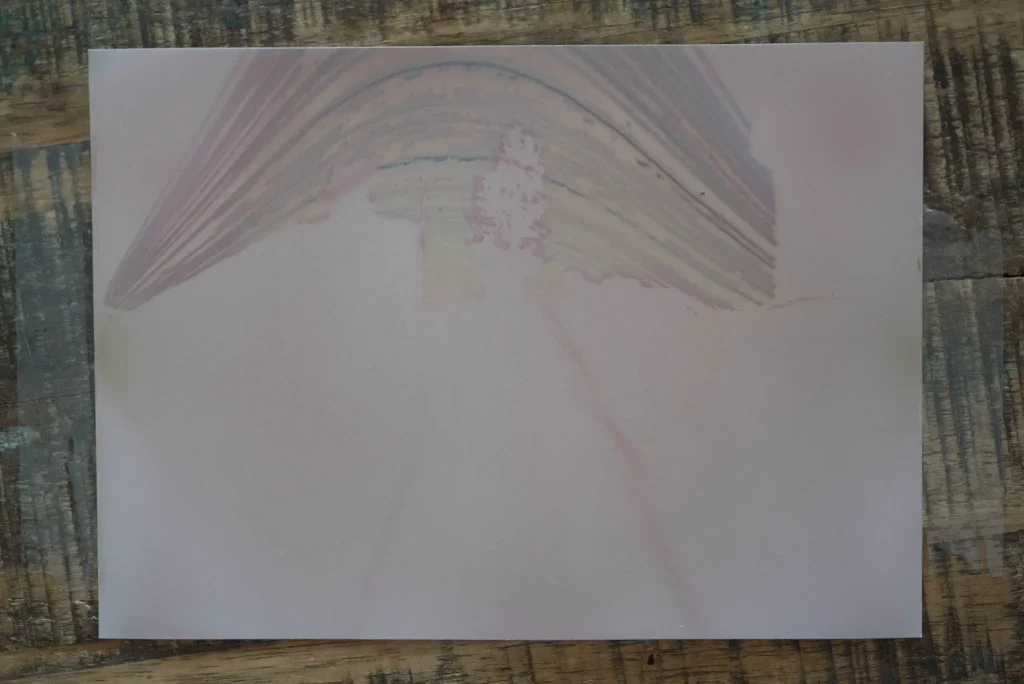
I photographed it with my Sony A7s and a macro lens, then – following the instructions in Sam’s little book – this is the resulting processed image:
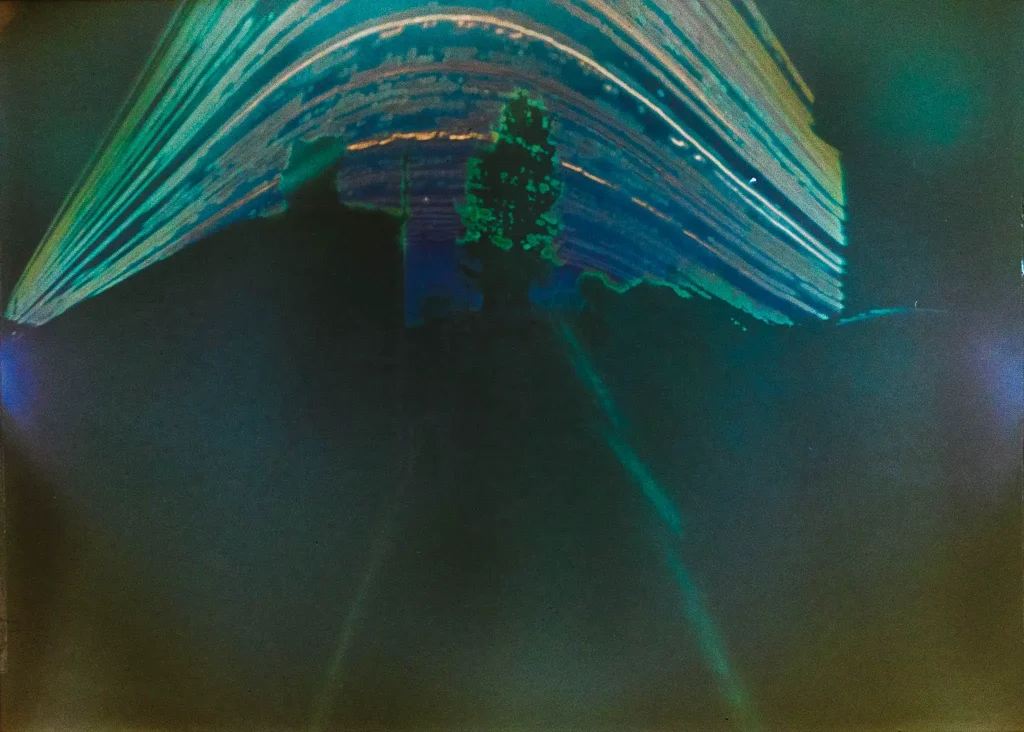
You can see the tree, and definitely the path of the Sun. It’s not as good as many of the results on the Facebook group, but for a first go, I’m pretty pleased with it! I think I might tilt the next one up slightly… but where to put it……??
Skip to the end
As is probably clear, I’m a fan of the Solarcan. Admittedly, as an analogue photography product, it automatically rouses my interest – especially when it cost so little cash! The fact is though, I’d have never tried this technique without the help of Solarcan! I can see that it wouldn’t be hard to make a simple pinhole camera and put a piece of photographic paper in to it, but for the sake of an initial go at the technique Solarcan offers even the most experienced photographer an even easier way to try out solargraphy.
What I really like about Solarcan though is that it gives people with essentially zero experience of photography a chance to experience a little bit of the magic of analogue photography with very little effort or thought – it even managed to engage my 6 year old daughter for a few moments, which is more that can be said of most other attempts I have made to get her interested in photography!
If you fancy having a go with a Solarcan – get yours here – the discount code “gotGAS” – which Sam has kindly given me to share with 35mmc readers – will help you on your way too!
Share this post:
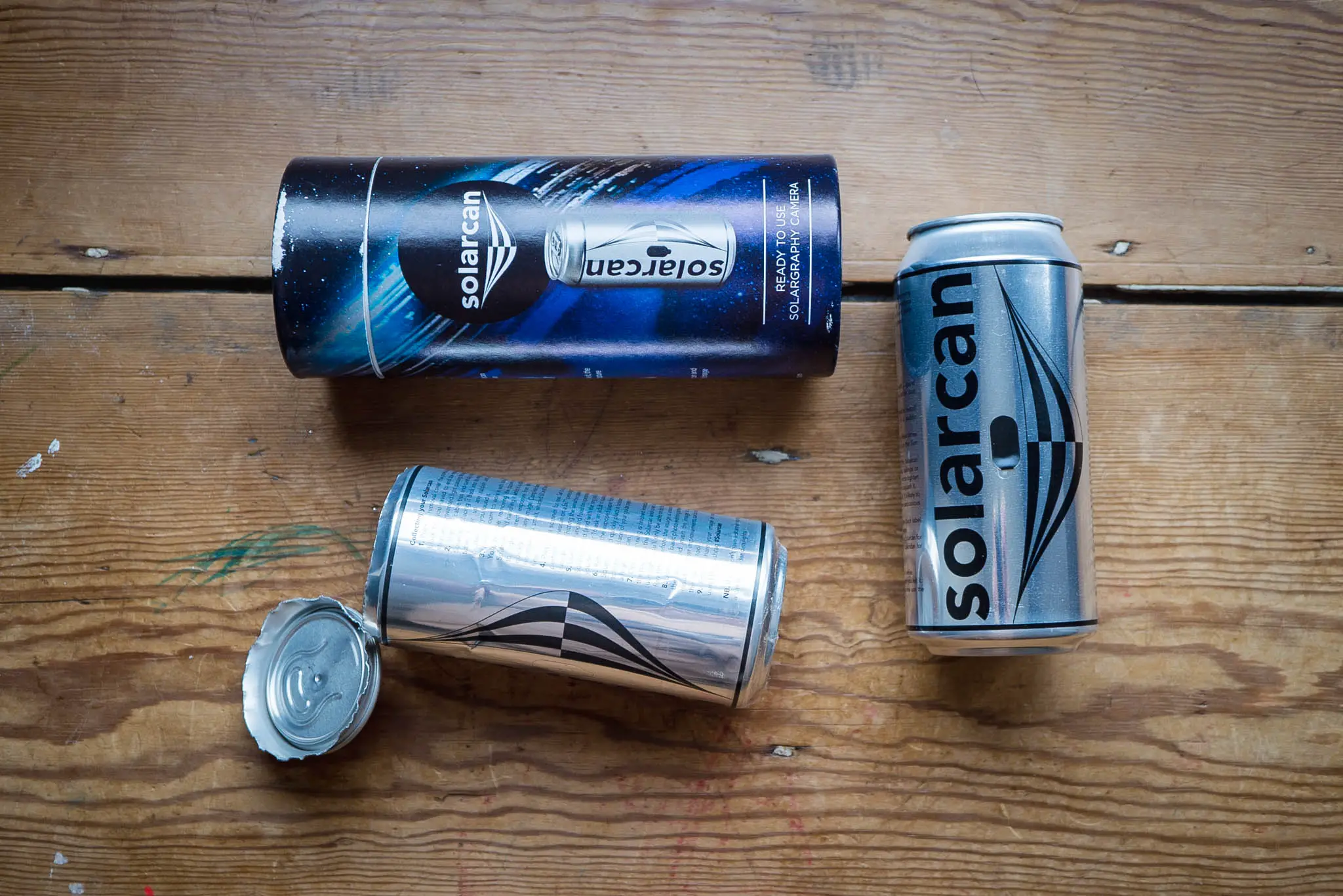








Comments
Dale Willetts on Solarcan Review – Solography; it does exactly what it says on the tin!
Comment posted: 10/06/2018
George Appletree on Solarcan Review – Solography; it does exactly what it says on the tin!
Comment posted: 10/06/2018
Jordan Lockhart on Solarcan Review – Solography; it does exactly what it says on the tin!
Comment posted: 11/06/2018
Johnny A on Solarcan Review – Solography; it does exactly what it says on the tin!
Comment posted: 09/10/2018
Comment posted: 09/10/2018